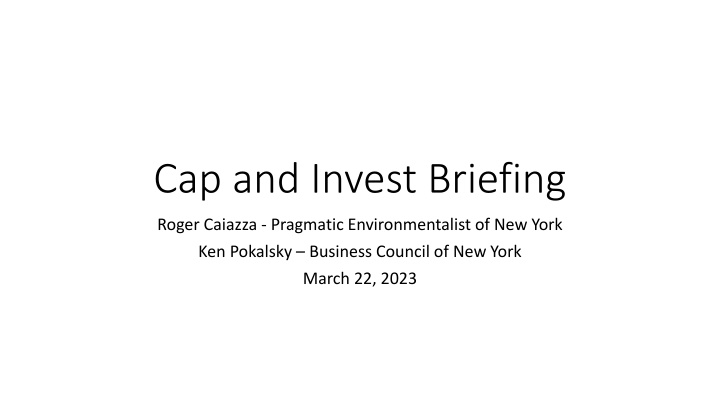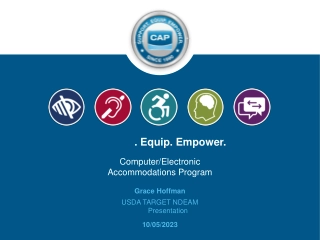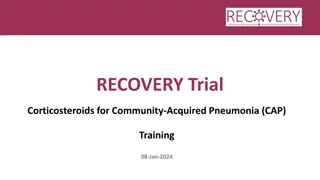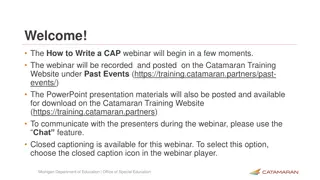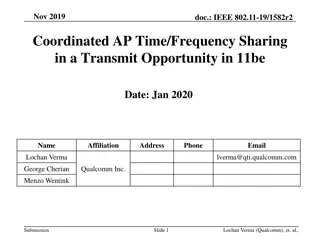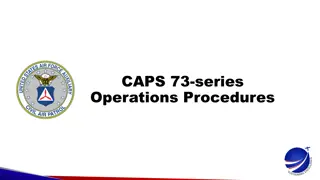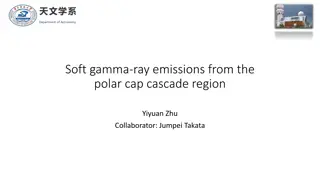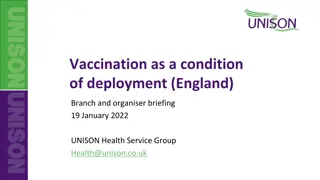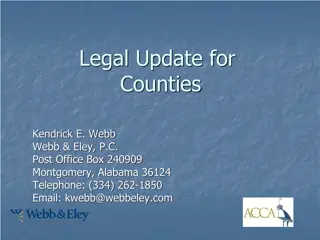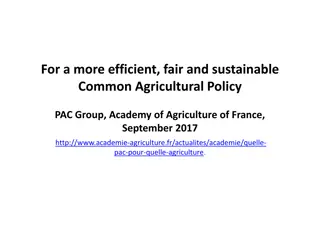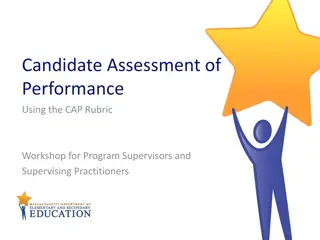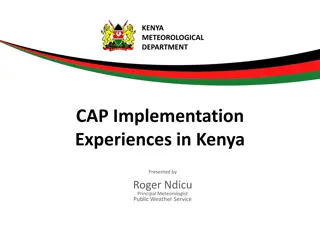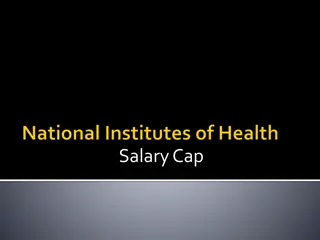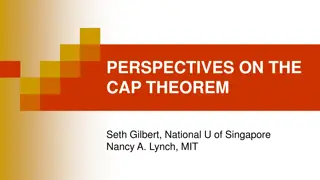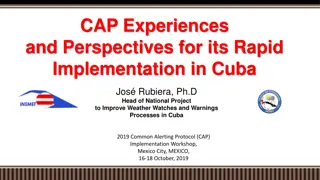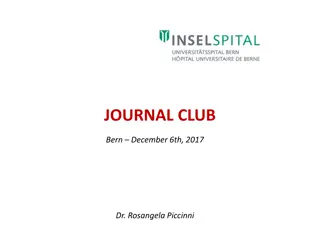Cap and Invest Briefing
Market-based pollution control approaches offer flexibility to reduce costs, but challenges exist in controlling carbon dioxide emissions and implementing aggressive reduction schedules in the Cap & Invest programs in New York. Logistical and implementation issues, arbitrary reduction targets, and revenue allocation concerns pose significant obstacles.
Download Presentation

Please find below an Image/Link to download the presentation.
The content on the website is provided AS IS for your information and personal use only. It may not be sold, licensed, or shared on other websites without obtaining consent from the author.If you encounter any issues during the download, it is possible that the publisher has removed the file from their server.
You are allowed to download the files provided on this website for personal or commercial use, subject to the condition that they are used lawfully. All files are the property of their respective owners.
The content on the website is provided AS IS for your information and personal use only. It may not be sold, licensed, or shared on other websites without obtaining consent from the author.
E N D
Presentation Transcript
Cap and Invest Briefing Roger Caiazza - Pragmatic Environmentalist of New York Ken Pokalsky Business Council of New York March 22, 2023
Cap & Invest Economy-Wide Approach Market-based pollution control approach offers flexibility that reduces costs Cap and Trade programs have successfully reduced SO2 and Nox emissions to meet caps determined on need and feasibility RGGI Cap & Invest program for CO2 has successfully raised revenues The problem is that Climate Act Cap & Invest has made changes to the features that made the other programs work Senate Bill 4008B amendments will not work
Cap & Invest Challenges Carbon Dioxide is a challenge to control No viable add-on control options Switching to lower emitting fuel has been responsible for observed reductions but opportunities are limited going forward Remaining options Displace energy produced by fossil with renewable Run Less Potential to create artificial energy shortage to meet allowance cap
NYS GHG Emissions by Sector NYS GHG (MMT CO2e AR5 20 yr) Emissions by Sector 160.00 140.00 120.00 100.00 80.00 60.00 40.00 20.00 0.00 Agriculture Buildings Electricity Industry Transportation Waste
Cap & Invest Concerns 75-0109, Promulgation of regulations to achieve statewide greenhouse gas emissions reductions establishes a process Let process play out and let subject matter experts do their thing Logistical and implementation issues are daunting Arbitrary 40% reduction by 2030 codifies an aggressive reduction schedule by limiting allowance availability If CO2 emissions are limited by allowance unavailability, then energy use is necessarily limited Revenues can be specified but need to be tied to the reductions needed Emission reduction priorities is a noble concept but putting it into practice is extraordinarily difficult
Senate Bill 4008-B Amended Part AAA Author of amendments had no clue Timetable Definition of sources One-year compliance period Hotspot provisions Energy Intensive / Trade Exposed Industries Allowance banking prohibition Allowances shall not be tradable, saleable, exchangeable or otherwise transferable
Extended Outline of Cap & Invest Briefing Additional information is outlined below Documentation available in New York State Cap and Invest Briefing
Market-Based Pollution Control Control based on market signals rather than explicit directives offers flexibility that reduces costs and encourages innovation Emissions Trading A limit on pollution levels Tradable allowances equal to the cap Prerequisites for success Realistic cap and reduction trajectory Regional or global pollution concern Time for market to react
Successful Emissions Trading Examples Acid Rain Program Cap and Trade Excess reductions at lower than expected costs significantly reduced acid rain Caveat railroad deregulation enabled switching to low sulfur coal Regional Greenhouse Gas Initiative Cap and Invest Successful implementation of auction system and produced revenues Caveat -Most of the observed reductions were due to fuel switching and not auction revenue investments
CO2 Control vs SO2 and NOx Controls Sulfur Dioxide (SO2) Controls Flue gas desulfurization scrubbing Switch to a lower sulfur fuel Nitrogen Oxides (NOx) Selective Catalytic Reduction add-on control equipment Change the combustion parameters Carbon Dioxide (CO2) Carbon capture and sequestration not viable as an add-on control Switch to a lower emitting fuel Combust less fuel aka create less energy for societal needs
Hochul Cap and Invest Proposal per Factsheet Based on best practices gleaned from RGGI success RGGI auction proceeds invested in energy efficiency, renewable energy, and other programs that save consumers money on energy bills and hasten the transition to cleaner energy. Specifically designed to enable public agencies to focus the investment of allowance auction proceeds in communities with particular needs A portion of the auction revenue generated will be returned to consumers to mitigate average costs to New Yorkers Design a program with the capacity to join other current or future programs
RGGI Success In New York CO2 emissions from the electric sector dropped 50% from 2000 to 2021 Emission reductions directly attributable to auction proceed investments accounted for only 16% of the observed reductions Primary reason for electric generating sector emissions was conversion from coal and residual oil to natural gas RGGI allowance auction proceeds through 2022 were $1.7 billion RGGI investment cost per ton reduced $565 per ton
Potential Revenues Hochul climate rebate fund of $1 billion representing 30% of the total expected revenues. That yields $3.3 billion for total revenues and an economy wide allowance price of $8.66. If the allowance price equals the current RGGI price of $13 per ton, then the total revenues rises to $5 billion. The New York Value of Carbon in 2022 is $129 per ton and using that would provide $50 billion per year. Fund necessary annual reductions at the historical cost per ton reduced from RGGI investments ranges between $46 and $10 billion per year. Cost impact $0.08 and $1.14 per gallon of gasoline and between $0.47 and $7.04 for Mcf of natural gas.
Scoping Plan Evaluation Criteria Certainty of emission reductions Price certainty Prioritizing emission reductions and avoiding hotspots in disadvantaged communities Mitigating risk of leakage Capacity to join other current or future programs is a Hochul criterion
Certainty of Emission Reductions -Emissions Cap The most economically efficient level for the emission cap is where marginal abatement costs are equal to marginal benefits from the reduced emissions EPA emphasizes the importance of setting a cap based on abatement options EPA NOx cap and trade programs evaluated source options Climate Act cap is a political construct no analysis
Binding Cap I define a binding cap as one chosen arbitrarily without any feasibility evaluation. Climate Act 40% reduction of GHG emissions by 2030 is an arbitrary target Annual allowance allocations presumably are set based on the starting point and the 2030 limit
NYS GHG Emissions by Sector NYS GHG (MMT CO2e AR5 20 yr) Emissions by Sector 160.00 140.00 120.00 100.00 80.00 60.00 40.00 20.00 0.00 Agriculture Buildings Electricity Industry Transportation Waste
Auction Price Certainty Auctions can be designed with price ceilings and price floors to hit a proceeds target Rebate mentioned $1 billion and 30% of proceeds so the auction target could be around $3 billion Environmental advocates are talking about a need of $10 billion a year Estimated emission trajectory and observed cost per ton reduced based on RGGI auction investments go up from $10 billion
Allowance Market Price Uncertainty If the investments in displacing emissions or energy use are too slow, ineffective, or inefficient then there will be a shortage Prices increase when there is a shortage Allowance prices increase when there is uncertainty At the start of trading programs prices have started high before settling at lower prices
Emission Reductions Priorities Scoping Plan goal - Prioritizing emission reductions and avoiding hotspots in disadvantaged communities GHG emissions have no hotspot issues Disadvantaged community concern is for other pollutants but those pollutants are regulated differently National Ambient Air Quality Standards Advocacy concern with hot spots is based on a misunderstanding of power plant emissions and the pollutants that they allege are hot spot issues
Capacity to join other current or future programs Hochul recommendation includes compatibility goal Climate Act has a unique emission accounting system that is incompatible with other jurisdictions Climate Act emission accounting system mandates consideration of upstream emissions which is another compatibility challenge
Mitigating Risk of Leakage Leakage - emissions reductions from New York policies are offset by emissions increases elsewhere Inherent problem with GHG trading programs The smaller the market the more likely that this is a problem
Cap & Invest Concerns 75-0109, Promulgation of regulations to achieve statewide greenhouse gas emissions reductions establishes a process Arbitrary 40% reduction by 2030 codifies an aggressive reduction schedule by limiting allowance availability If CO2 emissions are limited by allowance unavailability, then energy use is necessarily limited Revenues can be specified but need to be tied to the reductions needed Emission reduction priorities is a noble concept but putting it into practice is extraordinarily difficult
Senate Bill 4008-B Amended Part AAA Timetable Definition of sources One-year compliance period Hotspot provisions Energy Intensive / Trade Exposed Industries Allowance banking prohibition Allowances shall not be tradable, saleable, exchangeable or otherwise transferable
